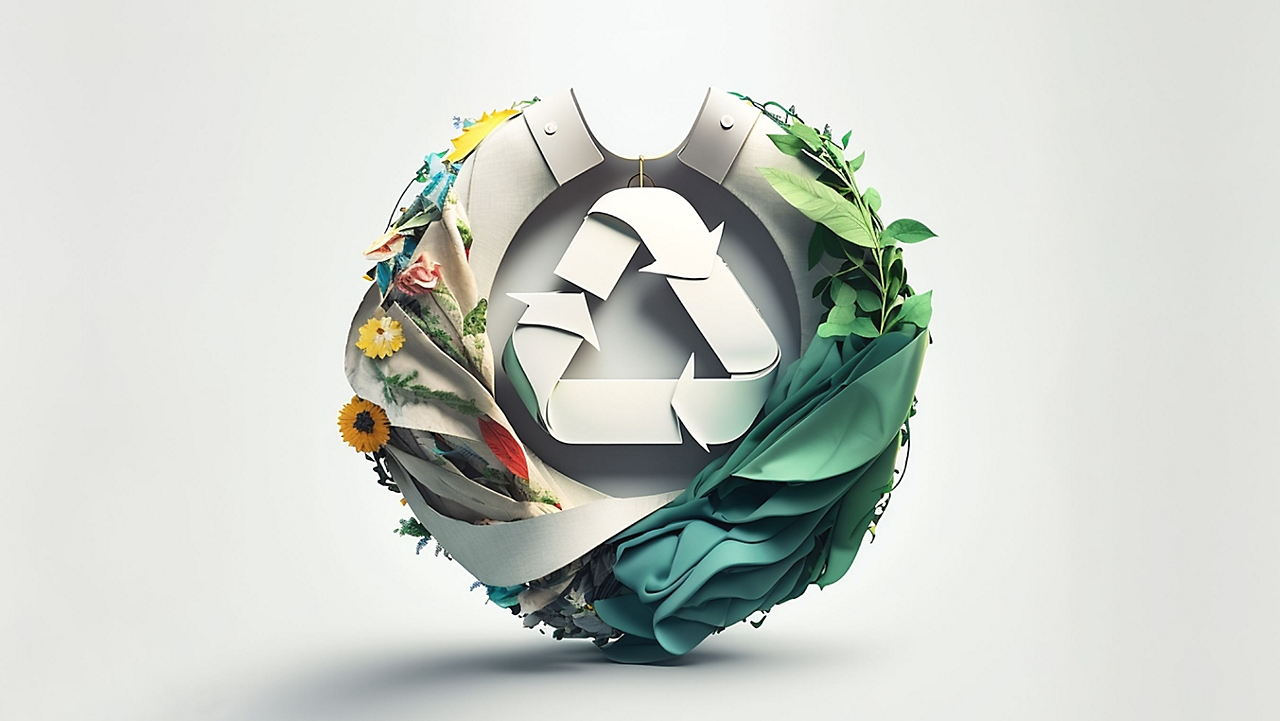Fashionably Sustainable: Understanding the Future of Fashion
By Dr. Naresh Tyagi, Chief Sustainability Officer, Aditya Birla Fashion and Retail Ltd |Jun 01, 2023
Organisations looking to achieve sustainability, tread a fine line between improving bottom lines and achieving environmental goals. For the fashion industry, the entire process from raw material production to finished garment consumption has been under the scanner. With India being one of the major textile and apparel production hubs in the world, Dr. Naresh Tyagi, Chief Sustainability Officer, Aditya Birla Fashion and Retail Ltd, helps us understand what practices can be put in place to contribute towards a sustainable future.
The fashion and textile industry is an integral part of the global economy. It is the third largest manufacturing sector,[1] employing 45 million people directly and another 60 million in allied industries in India alone, with women making up to 60-70 % of the total workforce in the industry.[2]
Recently, the progressive growth of the fashion sector has been plagued with mountains of clothes piled up in landfills, labour exploitation, copious amounts of waste generation, and environmental pollution. The industry, as we know it today, has been a proponent of fast fashion that has ruled our closets for over half a century. The fast fashion model is built around making more but making cheaply to sell at significantly marked up yet still low prices to the consumers. This model has been a product of and has in turn promoted the idea of buying more, buying cheaply, and moving onto the next new thing at a much faster rate. Time has proven this massive yet fragmented and exploitative model to be unsustainable.
Consumers and regulators alike have started to question the invisible costs of fast fashion and its environmental, social, and human impact. This consumer awareness, accompanied by evolving social and economic conditions in the world and calls for sustainability, has forced fashion brands at all levels to rethink their business practices and their impact on the planet and its inhabitants.
Changing the Pattern: A Makeover for Fashion
As brands look to become more responsible in their practices, this responsibility needs to extend from the consumer front of retail, all the way across the entire value chain while addressing the three pillars of sustainable fashion: environmental, social, and economic. The environmental impact of the fashion sector is significant, contributing up to 8-10% of the total greenhouse emissions of the planet.[3] Apart from this, the water consumption and waste generation contribute to its negative impact on the environment. Governments and international regulatory bodies have chalked out parameters and incentives for fashions brands to adopt more sustainable practices across the value chain. To this end, some companies have set and even met targets on reducing their carbon footprint and water consumption across the value chain, among taking other measures for sustainability.
On the social side, the brand responsibility has expanded from mere shareholders to stakeholders including consumers, employees, vendors, partners, and in a country like India, even governments. This group has expanded on the global scale with the rapid growth and expanding consumer class in Asian countries like China and India, leading them to move from being just manufacturers to having access as consumers of these products. Their rise on the global front has also brought in global standards for transparency, labour laws, and environmental regulations.
With the changing social environment, it has become imperative for the fashion and textile industry to rethink its business models to survive on the economic front in the long term. This can be achieved through systemic collaboration and innovation, improving the entire gamut of the value chain, forming integrated systems using life cycle analysis to determine whether the issue lies at the environmental, social, or the economic front.
Leveraging Technology for Responsible Innovation
Systematic change requires innovation, and this innovation needs to extend across the value spectrum, encompassing raw material, manufacturing, supply chain, and even the consumer front—retail.
The traditional and largely still existing system of manufacturing and supply chain in the fashion sector is fragmented. Today, using artificial intelligence, machine learning, and Internet of Things, companies can leverage technology for robust and real-time flow of information across the value chain. They can look at the complete journey through product lifecycle management platforms and collaborate on product design, creation, and manufacturing. It provides transparency and product traceability at all stages of manufacturing, moving through the complete supply chain, benefitting both, the producer and the consumer.
At the retail end, technology can trace buying behaviours and help companies maintain lower product inventories for what doesn’t sell and make more of what does. This will reduce wastage across the garment value chain and promote not only resource efficiency but also resource optimisation, contributing to the three pillars of sustainable fashion mentioned previously.
Building a Circular Economy
The 12th Sustainable Development Goal (SDG-12) listed by the United Nations emphasises on building national frameworks for not only sustainable production but also consumption. Along similar lines, the Prime Minister of India had introduced the concept of LiFE—Lifestyle for the Environment—at CoP 26 in 2021.[4]
The existing linear model of (over)production, distribution, and (over)consumption, however, defies these goals towards sustainable development. With the fast fashion mentality of use and throw at a much faster rate, the clothes produced follow a very short journey to the landfills, where every second a new truckload of clothes is dumped. In this current form, the system is unsustainable in the long run, and to combat this, the garment industry needs to go back to the four R's of reduce, reuse, recycle, and repurpose to promote circularity.
To move towards circularity, companies need to ask themselves, how do they make their facilities ‘zero waste to landfill’, and how can they make it more water, energy, and resource efficient. Reducing resource utilisation can be the first step in the production and consumption cycle of a garment. Companies have been investing in reducing the amount of resources they invest in the production of a garment and optimising their resources for better efficiency. For example, many companies have perfected the production of jeans using only a fraction of the water traditionally consumed in the same process.
At the same time, there are attempts to reuse the pre-consumer waste[5] by repurposing the material or converting it into raw material. Many companies have started initiatives to reuse and find ways to recycle the post-consumer waste (generated as used clothing) through buy back and various garment collection initiatives. These clothes are then segregated into those that can be donated further, those that can be repurposed or refurbished, and finally those that can be processed back into raw material, to reduce their waste production. Companies can also avail the support of life cycle analysis of their products to gauge the environmental impact from raw material production to the final consumption and reuse/recycle before the garment ends up in a landfill. The European Union taxonomy[6] is a great example of successful promotion of reuse and recycling in the garment industry and India has been taking steps in the same direction. Yet, the foundation of circularity in the garment ecosystem needs to be laid down through regulatory support and consumer awareness.
Decentralising to Integrate Better
As we have now established, building a sustainable value chain is imperative for securing the future of your company in the garment manufacturing sector. This entails employing technology to mitigate the negative environmental and economic impact while maintaining and nurturing the bottom lines for growth. An example of integrated supply chains can be found in our micro manufacturing system at Aditya Birla Fashion and Retail Ltd.
Keeping in mind the rapid urbanisation and increased cost of living (and in turn, manufacturing), with the mass exodus of migrant workers back to their native villages triggered by the lockdowns under COVID-19 we invested in a decentralised micro manufacturing system while banking on this reverse migration. Instead of bringing the workers to the factories we took the factories to them. To maintain nearshoring and seamless supply chains, we decentralised our manufacturing value chain and moved a part of our labour-intensive activities like sewing to the villages near our major manufacturing centres.
The system helped achieve the previously mentioned three pillars of sustainable development by reducing the carbon footprint and the burden on urban resources and workers by using the existing rural ecosystems and investing in them. This, in turn, helped keep the manufacturing costs low while improving the social conditions of the workers, especially women who had the opportunity to work closer to home and avail flexible working hours as per their requirements. The system also provided an environment for entrepreneurial growth by identifying and training enterprising local candidates and giving them the opportunity to run the manufacturing facilities and in turn, provide employment in their communities.
Looking Towards the Future of the Fashion Industry
The last decade has been about over consumption accompanied by overproduction. But as slow fashion gains on fast fashion, I believe this decade will be one of responsible consumption and production. It would be lack of foresight to chalk sustainability up as a mere trend, for it is a crucial ingredient for the future of not just one company but the entire fashion industry. To become more sustainable across the spectrum (environmental, social, and economic) the industry will need to adapt, adopt, and innovate to keep up with changing consumption patterns and technological disruptions in the industry, in both product development and consumer facing side.
The new generation is conscious of their social and environmental impact, and this extends to the goods they consume. With the evolution of industry, organisations need to be more conscious of their impact on the society in relation to their growth. As I have mentioned before, the companies need to look not towards achieving resource efficiency but resource optimisation.
The best way to make the manufacturing practice more sustainable and inclusive is through innovation, technology, and collaboration to make systemic changes and become future ready. I see the fashion industry evolving for the better and becoming more sustainable in the coming decades, for without these changes, the impeccable growth that the fashion sector foresees today might be stopped in its tracks.
[1] The World Bank. (2019, September 23). How Much do our Wardrobes Cost the Environment? https://www.worldbank.org/en/news/feature/2019/09/23/costo-moda-medio-ambiente
[2] Jhunjhunwala, Riju.(2020, August 30). Textile Industry Supporting Indian Employment. Times of India. https://timesofindia.indiatimes.com/blogs/voices/textile-industry-supporting-indian-employment/
[3] Stallard, Esme. (2022, July 29). Fast Fashion: How Clothes are Linked to Climate Change. BBC. https://www.bbc.com/news/science-environment-60382624
[4] Lifestyle for Environment. https://www.niti.gov.in/life
[5] Leftover raw material generated in textile and garment processing.
[6] EU taxonomy is a classification system that establishes a list of environmentally friendly economic activities. The list aims to discourage green washing and promote greener investment choices.

Dr. Naresh Tyagi, Chief Sustainability Officer, Aditya Birla Fashion and Retail Ltd
Dr. Naresh Tyagi, a dynamic leader with over three decades of rich experience in the textile, apparel, and retail industries, is currently serving as Chief Sustainability Officer of Aditya Birla Fashion and Retail Limited. He is an active member on prominent global and national industry platforms, including the Cotton 2040, the Ellen MacArthur Foundation, Consortium of Green Fashion, Indian Retail Forum, Textile Association, and Circular Apparel Innovation Factory (CAIF). He is also part of the ‘working group’ at SAC, Cotton 2040 & Science Base Target initiative (SBTi), and the steering committee at GIZ, a German Government agency for a ‘private-public development partnership project’ to build a circular ecosystem for the textile and apparel industry in India.




